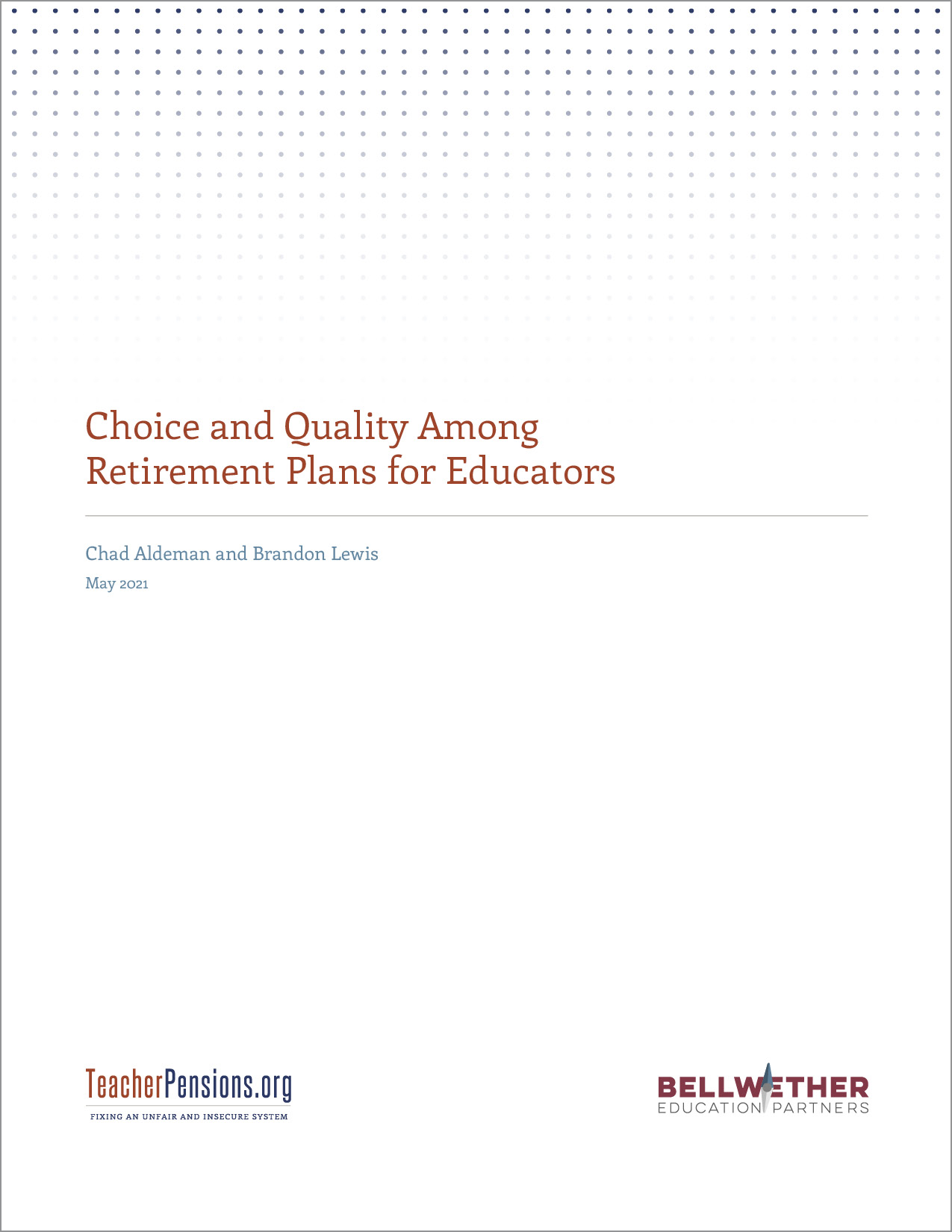Choice and Quality Among Retirement Plans for Educators
Do employees at public colleges and universities have better retirement benefits than K-12 employees? This is the central question in the new report Choice and Quality Among Retirement Plans for Educators. To answer this question, we evaluate the quality of higher education and K-12 retirement plans using five key variables:
- Choice: Do employees have a choice over their retirement plan?
- Vesting: How long do employees have to stay in the system to qualify for employer-provided retirement benefits?
- Benefits: What is the value of the benefit that employees receive from their employers?
- Debt: Has the plan built up unfunded obligations, and how much are employers contributing toward those unfunded liabilities?
- Social Security: Are employees covered by Social Security?
The analysis shows that K-12 teachers are often offered different, worse retirement benefits than those offered to public higher education employees. When compared with higher education employees, K-12 teachers are less likely to have choice over their retirement benefits, they have to serve longer to qualify for those benefits, and the benefits are worth less. Moreover, the K-12 sector is more burdened by unfunded liabilities, whereas higher education retirement plans are able to direct a higher share of employer contributions straight toward employee benefits.
Based on these findings, the authors recommend that states provide the same retirement plan options for all public sector employees. K-12 teachers should have the same choices in their retirement plans as their higher education counterparts. Beyond expanding the number of retirement options, states need to ensure that the options they offer are good ones, including short vesting periods, portability, and adequate employer contributions. Adopting these recommendations will give K-12 employees access to more and better retirement options.
Download the full report here or read it in the viewer below.

